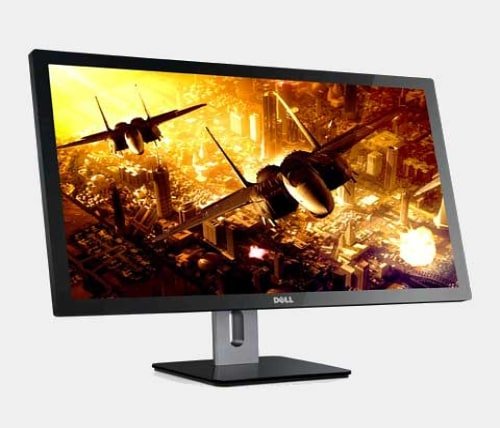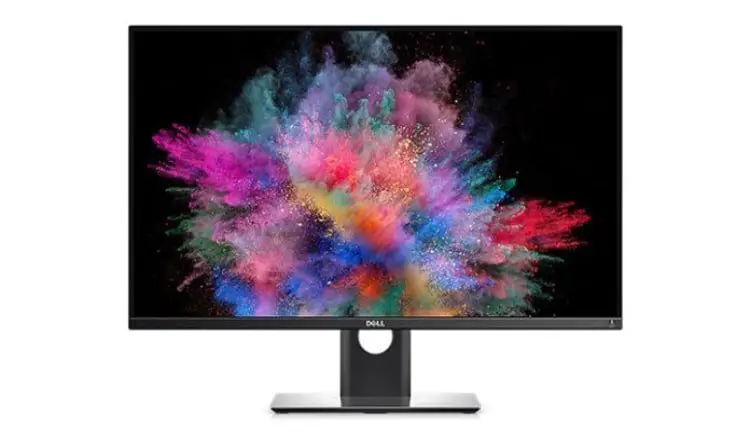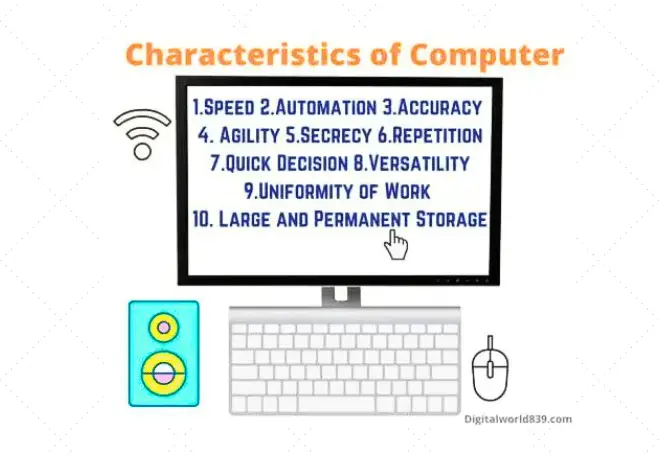In today’s digital world we are very have seen different types of monitors. We spend most of our time sitting in front of many types of monitors, like playing games, watching movies, and many other things.
Have you wondered which types of monitor are you using to watch TV and playing games? Well, All the 5 types of monitors I have mentioned in this article for you look at which monitor you are using. Let’s get to know.
5 Types of Monitor
A good display can be very effective in the user experience. The properties of display devices have also improved a lot due to the innovation in Display Technologies. There are many types of computer monitors available right now, in the case of CRT monitor and plasma maybe not.
1. LCD monitor

LCD is known for ‘Liquid Crystal Display’ made of liquid crystals. It is the most used monitor worldwide, as it requires less space, consumes less electricity, and produces relatively less heat than an old CRT monitor.
LCD monitors are thinner and much lighter in size and weight than CRT monitors. Due to this, it competes with LED and OLED in the market.
This display was first used in laptops, and later the manufacturers also being produced for Desktop Computers range from 17 inches to 60 inches. Being these monitors need less space and are light in weight, they do not create any trouble in transporting and moving them from one place to another.
Both LCD and LED monitors have considerably more adaptability for positioning the screen in the manner in which you need it. These monitors can turn, tilt up and down, and even rotate from landscape to portrait mode.
By consuming less energy it not only provides better graphics quality but also a fine brighter screen display. now, Don’t ask how an LED is able to be much brighter than an ordinary home’s lightbulb while consuming hardly any electricity, I honestly have no idea how they’re able to do this.
In this way, LCDs are very economical in the terms of costs, energy, image quality, and features with integration devices like speakers via ports.
2. LED Monitor

LED’s full form is ‘Light Emitting Diode’ is the latest innovation in the market today’s market competing with LCDs and Plasma Monitors. These types of monitors are slightly curved or flat panel displays that use light-emitting diodes for backlighting on the screen instead of cold cathode fluorescent (CCFL) for back-lighting.
LED displays are more bright with 4k resolution than other displays, due to which the user can be read or seen easily in daylight time. LED monitors use less power than LCDs as well as LEDs are widely used by gamers for playing high graphics and HD games.
The advantage of LEDs is that they produce images with higher contrast and vivid colors as well as don’t make a negative impact on the environment at the time of disposing of. In addition, the LEDs are more durable as compared to LCD and CRT Monitors.
The wavelength range of lights utilized is such that to give high quality. These LEDs screen delivers flicker-free image which lessens the eye strain and fatigue, and headaches.
These kinds of monitors have a long life expectancy, use less power, and are thinner greater contrast and more vivid colors, and have a less environmental impact than LCDs.
The price rate of LED monitors can be a little expensive than TVs even after same sized, so they are not affordable for some people at which they are available in the market.
3. OLED Monitor

OLED stands for “Organic Light Emitting Diode“. As the name suggests, it is made of organic material (such as carbon, plastic, wood, and polymers), that is used to convert electric current into light.
This is also the latest display technology used in displays of television, computer screen, game consoles, PDAs, or even in the latest smartphones. It can be thinner or lighter with a higher contrast ratio than LCDs
Since these LEDs are capable enough to produce a lot of different colored light, can be used directly to produce the correct color and there is no need for any backlight, which saves power also requires less space. The OLED display is considered great for watching movies.
OLED Monitors are considered the best display technology ever because of their characteristics like wide viewing angles, picture quality, outstanding contrast levels, No ghosting, fast response, and perfect contrast and brightness.
Also, you should protect the monitor from water as it can damage the OLED screen. The other disadvantages of the OLED monitor right now are its short life expectancy than LCDs and LEDs and the high price rate in the market currently.
4. Plasma Monitor

The Plasma monitor panel (PDP) is made of Plasma technology is another latest type of computer monitor technology. Display of plasma made with cells. These cells are filled with ‘electrically charged Ionized Gas‘. Such cells are called Plasma.
The basic idea behind its invention is that it illuminates the tiny colored fluorescent lights that create image pixels. Each pixel is made of three fluorescent lights like a tiny neon light- red, green, and blue lights. that produces a superior contrast ratio, along with the intensity of these lights also vary accordingly.
In addition, it has the advantage of slimness, a plasma display is flat rather than slightly curved as an LCDs has. It cuts down image distortion and glare through its perfect flat screens.
A plasma display offers a good response, superior performance, time, and a much wide viewing angle as compared to LCDs. Plasma displays come in sizes up to 60 inches that can be considered the best home theater and HD television.
The major disadvantages of plasma monitors are their limited production and screen sizes. Plasma monitors are heavier in size a well as consume more electricity, on average than LCD monitors.
5. CRT Monitor

Here CRT means “Cathode Ray Tube”. Its main part is the Cathode Ray tube which is called the “Generally Picture tube”. The above image is of the CRT monitor and was used a few decades ago as a desktop computer or to watching TV.
CRT monitors are much heavier in size as compared to LCD and LED monitors. Due to being heavy, they have much trouble while moving and transporting from one place to another. Also, they need more space for installation.
As they now disappeared from the market quickly in the last few decades, because display manufacturers switched their production lines from CRT 4:3 displays to LCD 16:9 widescreen displays in order to survive the transition to the digital world widescreen television of LEDs or LCDs.
Since they were more popular a few decades ago, but still you can have a secondhand version of the CRT monitor in the market.
CRT monitors being older television sets. That’s why are not only bulky but also consume a lot of electricity.
Types of Color Display in Monitors
Monochrome
This monochrome is made up of two words Mono (Single) and Chrome (Color), hence it is called Single Color Display and it displays the monitor’s output in Black & White colors.
Gray-Scale
These Gray-scale display monitors are similar to monochrome but it displays in gray shades. These types of computer monitors are mostly used in portable and hand computers such as laptops.
Color Monitors
Color monitor displays the output with the adjustment of RGB (Red-Green-Blue) radiations. The theory of such monitors is capable of displaying graphics in high-resolution it can be 4k.
Comparison of Different Types of Monitor.
Monitors Types. | LCD | LED | OLED | Plasma | CRT |
Full Form | LCD is known for 'Liquid Crystal Display.' | LED's full form is 'Light Emitting Diode.' | OLED stands for 'Organic Light Emitting Diode'. | Plasma also known as PDP stands for 'Plasma Display Panel'. | CRT stands for 'Cathode Ray Tube'. |
Color and Black Level | Good | Excellent | Excellent | Excellent | Good |
Contrast | Contrast Ratio ranges between 1000:1 to 4000:1 even more than this. | It has higher contrast ratio over 100000:1. | It has higher dynamic contrast ratio over 1000000:1. | It has contrast ratio over 20000:1. | It has contrast ratio over 15000:1. |
Brightness | Fair | Good | Excellent | Fair | Good |
Weight and Size | LCD monitors are compact in size and light in weight. | LEDs are also compact in size and very light in weight. | OLEDs are large in size and heavy in weight. | Plasma monitors are also large in size and little bit heavy in weight. | CRT monitors are bulky in size and very heavy in weight. |
Response Time | 8 - 10ms | 8 - 10 ms | 0.1ms | 0.1ms | 1ms |
Energy Consumption | Low | Very low | Moderate | Moderate | High |
Manufacture | Continuing | Continuing | Continuing | Discontinued | Discontinued |
FAQs
Who invented the Monitor?
The first cathode-ray monitor was invented by Karl Ferdinand Braun in 1897 at the same time when he invented the first cathode ray tube.
How many types of monitor are there?
There are five types of monitors CRT(Cathode Ray tube), LCD (Liquid Crystal Display), LED (Liquid Emitting Diode), OLED (Organic Light Emitting Diode), and Plasma Monitor all are used in televisions or computer desktops.
What are the 5 types of monitor?
The following are the five types of monitor: 1. LCD (Liquid Crystal Display), 2. LED (Liquid Emitting Diode), 3. OLED (Organic Light Emitting Diode), 4. CRT(Cathode Ray tube), and 5. Plasma Monitor.
Which is better monitor LED or LCD?
LED displays are more bright with 4k resolution than other displays, due to which they can be read or seen easily in daylight time. LED monitors use less power than LCDs as well as LEDs are widely used by gamers for playing high graphics and HD games.
Which is better CRT or LCD?
LCDs are much better than CRT monitors because they are much heavier in size as well as consume a lot of energy compared to LCD monitors. Due to being heavy, they have much trouble while moving and transporting from one place to another. Also, they need more space for installation.
Are CRT Monitors still used?
Not at all, CRT monitors being older television sets. As they now disappeared from the market in the last few decades, because display manufacturers discontinued it and switched their production from CRT 4:3 displays to LCD 16:9 widescreen displays in order to survive the transition to the digital world widescreen television of LEDs or LCDs.
In this article, you have known the 5 different types of monitors with different qualities and works. I hope you have learned a new thing today, you can also share this post on social networks. Cheers!










You are so awesome! I do not suppose I have read through anything like this before. So wonderful to discover somebody with some unique thoughts on this topic. Really.. many thanks for starting this up. This web site is one thing that is needed on the internet, someone with some originality!
You’re welcome, Shela, Happy to help. In fact, you can find many insightful articles on the site. Keep Reading, Learning, and Sharing!
Brilliant blog! I suppose for now i’ll settle for book-marking and adding your RSS feed to my Google account. I look forward to brand new updates and will talk about this blog with my Facebook group. Talk soon!
Very awesome
You’re welcome, Richard. Glad you learned some new, informative, and awesome stuff.
Thank you sir